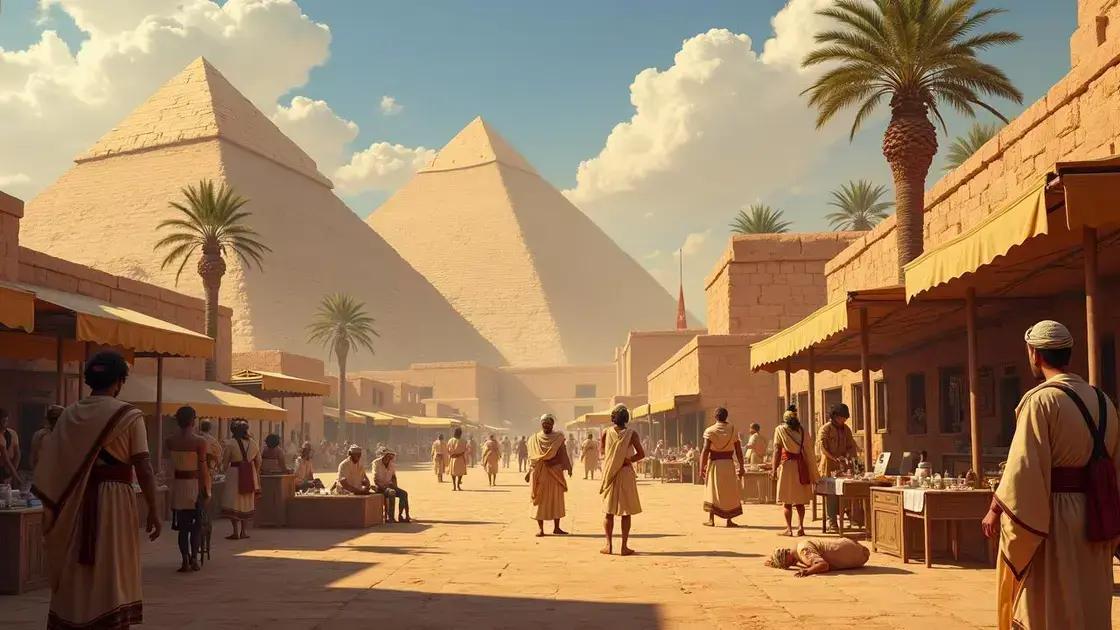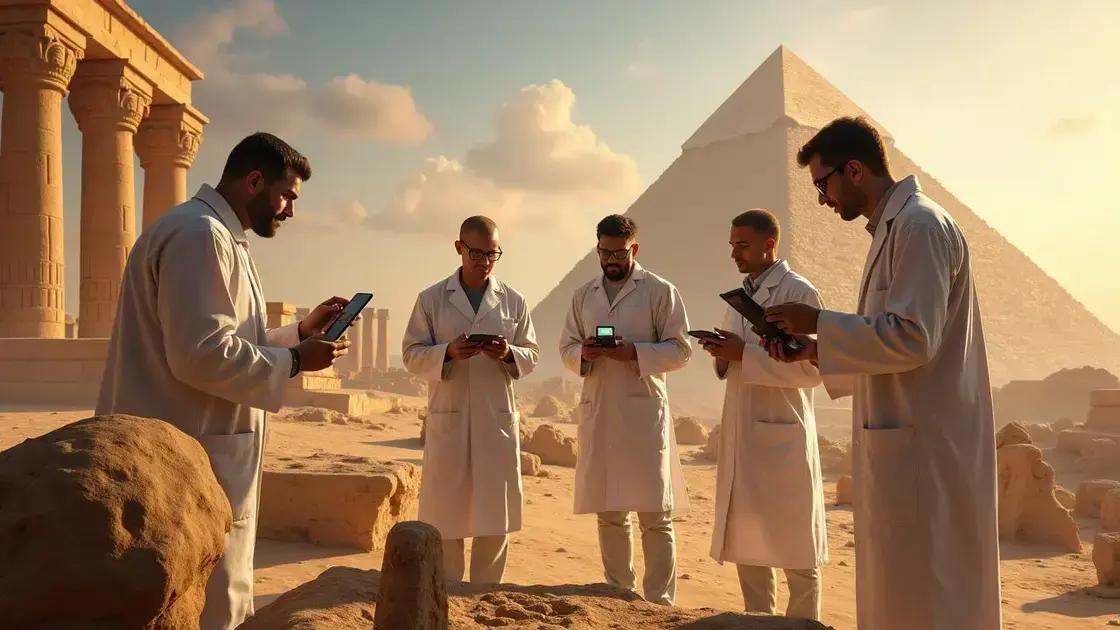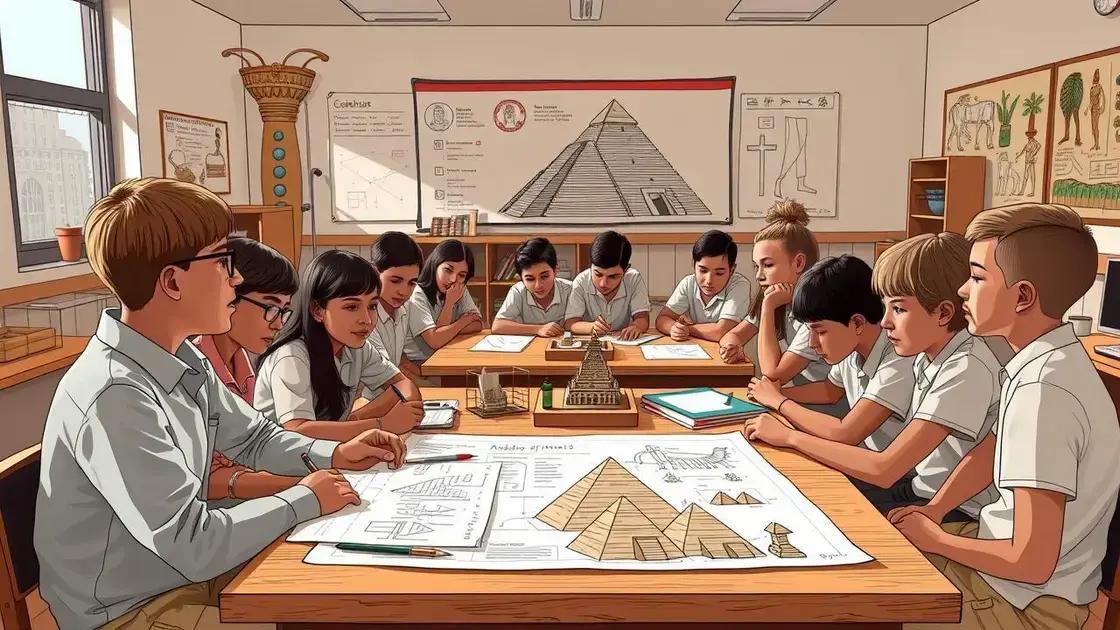The scientific evidence behind the tricks of the Egyptians reveals their advanced techniques in engineering, medicine, and agriculture, providing valuable lessons in sustainability, innovation, and holistic health practices that remain relevant for modern challenges.
The scientific evidence behind the trick of the Egyptians has fascinated historians and archaeologists alike. These ancient techniques and practices showcase incredible ingenuity and sophistication. By examining the intersection of science and history, we can uncover the secrets that allowed the Egyptians to achieve remarkable feats in architecture, medicine, and agriculture. This article will delve into the historical context, scientific discoveries, and the relevance of these practices in our modern world.
Unveiling the Egyptian Tricks: A Historical Overview

The tricks of the Egyptians have long intrigued people around the world. Ancient Egyptians were skilled in many areas, such as architecture, engineering, and medicine. By looking closely at their history, we can better understand these fascinating techniques.
Engineering Marvels
Pyramids are one of the most famous symbols of ancient Egypt. The Great Pyramid of Giza, built around 2580–2560 BC, remains a wonder today. It is made of over 2 million blocks of stone, each weighing about 2.5 tons. The precision in alignment with the stars showcases the Egyptians’ understanding of geometry and astronomy.
Medical Innovations
Ancient Egyptians practiced medicine with remarkable knowledge. They created medical texts that documented various ailments and treatments. Surgical techniques, herbal remedies, and the use of molds for injury treatment were part of their comprehensive medical practices. The Ebers Papyrus, a medical document from around 1550 BC, illustrates their advanced understanding of anatomy and healing.
Daily Life and Agriculture
Egyptians also excelled in agriculture, relying on the annual flooding of the Nile River for fertile soil. They used advanced irrigation techniques to maximize crop yield and sustain their population. From growing grains to cultivating vegetables, the skillful management of resources played a key role in their civilization.
These ancient practices demonstrate the Egyptians’ ability to innovate and adapt. Through rigorous methods and a deep understanding of their environment, they achieved incredible feats that continue to inspire researchers today.
The Science of Egyptian Techniques: Evidence and Analysis

The science of Egyptian techniques is both fascinating and complex. These techniques reveal much about how the ancient Egyptians utilized their knowledge of the world around them.
Material Analysis
One key area of study is the materials used in construction, such as limestone, granite, and mudbrick. Modern analysis techniques, including chemical testing and structural analysis, help us understand how these materials were sourced and manipulated. For instance, the use of copper tools displayed not just practicality but also marked innovation in engineering.
Architectural Techniques
Studies of ancient structures demonstrate how Egyptians employed advanced architectural principles. The precise alignment of pyramids and temples with the cardinal points shows their understanding of astronomy. Researchers utilize 3D modeling and computer simulations to recreate construction methods, giving insights into how massive structures were built using simple tools and labor.
Medical Practices
Egyptian medical texts reveal a sophisticated knowledge of human anatomy. They documented injuries, diseases, and cures in their medical papyrus scrolls. Modern examinations of mummies have uncovered evidence of surgical operations, suggesting that they practiced forms of anesthetics and advanced surgical techniques. This ongoing research helps illuminate how these practices laid foundations for modern medicine.
The combination of historical texts and modern scientific methods provides a clearer picture of the innovations that the Egyptians developed over thousands of years. The analysis of artifacts and structures continues to highlight their remarkable achievements.
Modern Implications: What We Learn from Egyptian Practices

Modern implications of ancient Egyptian practices offer valuable lessons for us today. The Egyptians were masters of adapting to their environment, and their innovations can inspire current practices in various fields.
Sustainable Agriculture
One significant aspect of Egyptian society was their use of irrigation systems. They harnessed the annual floods of the Nile to grow crops effectively. This practice emphasizes the importance of sustainability in agriculture, reminding us to manage water resources wisely and implement efficient systems to support food production.
Architecture and Engineering
The engineering techniques of the ancient Egyptians continue to influence modern architecture. Their ability to construct massive buildings using simple machines illustrates the value of innovation and creativity. Today, architects can learn from the Egyptians’ focus on durability and functionality, incorporating these principles into sustainable designs that withstand the test of time.
Healthcare Lessons
Egyptian medical practices, which integrated surgical techniques and herbal medicine, serve as a foundation for modern healthcare. Understanding their approach to treatment can inspire new research into holistic healing and emphasize the importance of the mind-body connection. Adopting a more integrated approach to health could benefit current healthcare systems.
By studying these ancient practices, we can discover solutions for contemporary challenges. Finding inspiration in the past helps us build a more resilient and innovative future.
Embracing the Legacy of Egyptian Innovations
The scientific evidence behind the tricks of the Egyptians reveals a civilization rich in knowledge and creativity. From their advanced engineering methods used to build the pyramids to their sophisticated approaches to medicine, the Egyptians remain an inspiration.
Modern implications drawn from these ancient practices encourage us to rethink our current methods in agriculture, architecture, and healthcare. By adopting a similar mindset of innovation and sustainability, we can address contemporary challenges effectively.
In conclusion, the lessons from Egyptian practices are not just historical curiosities; they provide us a roadmap for a more efficient and sustainable future. Embracing this legacy can lead to new discoveries and solutions that benefit society as a whole.
FAQ – Frequently Asked Questions about Egyptian Innovations
What techniques did the ancient Egyptians use in construction?
The ancient Egyptians employed advanced engineering techniques, including precise measurements, the use of ramps, and leveraging simple machines to construct massive structures like pyramids.
How did the Egyptians manage their agricultural practices?
They developed sophisticated irrigation systems to harness the annual flooding of the Nile River, allowing them to cultivate crops efficiently and sustainably.
What can modern medicine learn from ancient Egyptian practices?
Modern medicine can draw insights from the Egyptians’ holistic approaches to healing, including the integration of herbal remedies and surgical techniques documented in their medical texts.
How did the knowledge of astronomy influence Egyptian architecture?
The precise alignment of temples and pyramids with celestial bodies showcases their advanced understanding of astronomy, which guided their construction methods.
What lessons can we apply from Egyptian practices today?
We can learn the importance of sustainability in agriculture, innovation in engineering, and the integration of holistic health practices to address contemporary challenges.
Are there any modern applications of ancient Egyptian medicine?
Yes, some principles of ancient Egyptian medicine, such as balancing treatments and considering psychological health, are being revisited and integrated into modern holistic health approaches.












